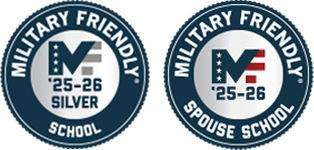You can help by noticing the following common fire risks and bringing them to the attention of the appropriate individuals. The easiest way to report these safety issues is by emailing the Office of Environmental Health and Safety via [email protected]. This email address is not for emergencies and an immediate response is not likely.
We have included explanations for why these seemingly innocuous practices can be a fire/safety risk:
- Fire extinguishers: They need to be inspected monthly. If you notice a fire extinguisher that is damaged, fell of the hook, or has a gauge that reads "discharged", contact OEM. When a fire strikes, we want these tools to be ready.
- Extension cords: If you see one in use, please remove it. Extension cords are not a safe substitute for permanent wiring. If you need more outlets, you need to put in a work request to have them installed, via my.newpaltz.edu. Extension cords cannot tolerate numerous electronic devices and will overheat and catch fire. Extension Cords should be replaced with power strips. All power strips must have a "RESET" switch.
- Misapplication of power strips: If you are using a power strip, it must be plugged directly into an outlet. Do not use two power strips OR an extension cord and a power strip to make up the distance to an outlet. Power strips come in a variety of lengths and can accommodate whatever distance you need to cover. Power strips are meant only for small electrical appliances, not air conditioners, refirgerators, etc.
- Storing things up to the ceiling: Don't do it. The Fire code requires at last 18" clearance for all rooms, more in certain locations. If there are sprinklers in your workspace, then you must leave 18 inches from the bottom of the sprinkler head. This allows the sprinklers to do their jobs by wetting down the stored material. If the sprinkler head is blocked, it cannot spray the room effectively with water. Buildings without sprinkler are required to have 24" of clearance between the ceiling and stored materials.
- Blocked emergency exits and corridors: Keep emergency exits and corridors free of chairs, filing cabinets, small tables and rugs that could cause people to trip or block their egress. In the event of a fire, this is your way to safety. During a fire, the corridor could be smoky and dark, with alarms blaring. Anything in your way could cause injury and slow the evacuation of the building!
- Electrical panels: Most of these will be located in mechanical or custodial closets that the majority of you won't have access to, however if you do electrical panels need at least three feet of clearance in all directons.
- Propped open fire doors: No wooden door chocks allowed, they damage the door and make them not close properly. Every door serves to protect you in a fire, slowing the spread of fire and smoke. Some offer more protection than others, like Fire Rated Doors. If a door is open, it has a fire rating of zero minutes and offers no protection!
- Malfunctioning EXIT lights, missing outlet plates and switch covers: If you notice any of these problems, please submit a Facilities work request. Each of these devices help reduce the risk of fire and injury.
The following items are prohibited across all exterior areas of campus:
-
Fireworks
-
Illegal and prohibited weapons
-
Illegal and prohibited drugs
-
Open alcohol containers
-
Candles (permitted outside with Environmental Health and Safety approval)
A list of items prohibited in non-residential buildings can be found here.
A list of items prohibited in residential buildings can be found here.
